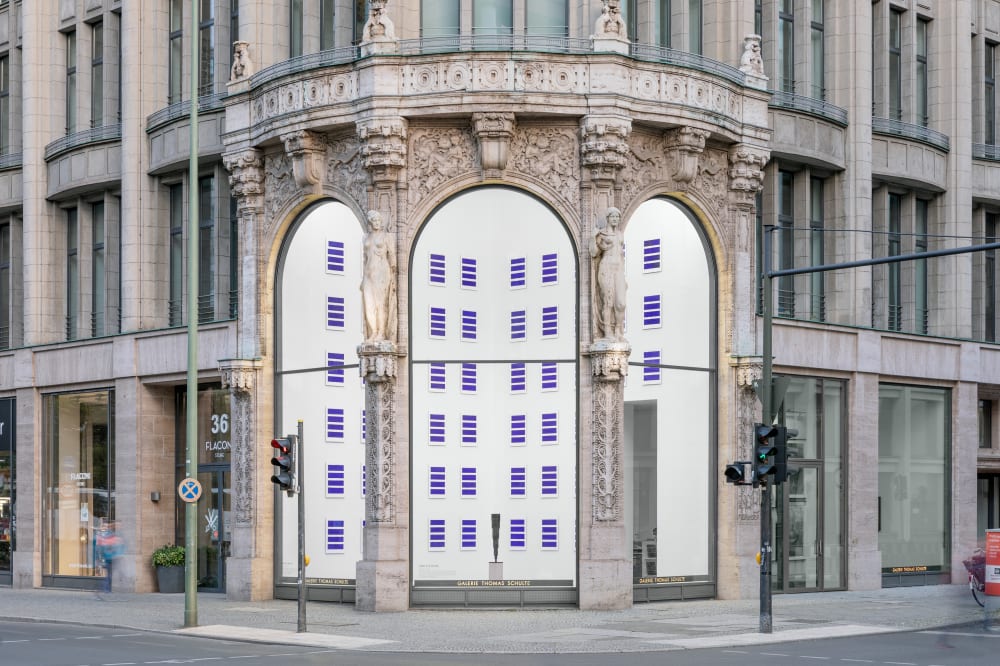Rhythms: Idris Khan
-
Works
-
Introduction
In his third solo exhibition at Galerie Thomas Schulte, Idris Khan presents a new large sculpture, and several paintings on glass, aluminium, and paper. Khan’s latest works are characterised by materially and constructively superimposing layers of text through a process of repeatedly layering the surface with painted lines of language and sequences of numbers.
Idris Khan’s works address the big issues pertaining to art, time, and memory through the means of appropriation, abstraction, and repetition. In the exhibition Khan displays several works of a body of works called Rhythms, different series of oil stick paintings on sheet music. Here, the notation has been blocked out leaving the natural breaks on the page. As a group the work takes on a minimal presentation creating a rhythm of shifting lines across the gallery wall; a composition that eloquently speaks about the silence of the material. Another new work, Beginning, a large glass sculpture, appears like one of Khan’s stamped paintings stretched out over seven panels. Viewed separately, words can be discerned on each glass, but when seen from the front, the words on the seven panels blend into one black abyss.
Khan’s work is about language, and more specifically about written language. It is also about compressed ideas of time and an exploration of repetition and its role in memory. Key to an understanding of Khan’s position is to bear in mind one of the main differences between the media of text and image. Texts are produced and experienced in linear procession and over time. Images are perceived as immediate, direct, and instantaneous. The surface is also what interests Khan in his more recent works on glass, a material mainly associated with transparency. In De pictura (1435), Leon Battista Alberti instructed painters to consider the frame of a painting as that of a window onto a reality that lies elsewhere. Contradicting Alberti’s metaphor, Khan in his works builds up on the transparent panel layers and layers of stamped text gradually darkening and obscuring it. Only at the fringes we can distinguish individual words and parts of sentences, which radiate away from the dense and opaque centre.
Khan in his work has responded to some of the greatest works in literature and culture by a wide range of authors, including Jacques Monod, Barnett Newman and Paul Celan distorting what he appropriates beyond recognition. It is impossible to know, what actually is being said. Khan’s work resists the fixation of literal meaning. The beauty of the abstraction of the words lies in the fact that they become meaningless, but at the same time really powerful. In the words of Jan Verwoert: „Speaking in the spirit of opacity means speaking freely, not having to talk, but talking nonetheless. [...] Words are not essential. But precisely because they are not essential, they make a greater impact when they appear in the picture. Because they do so freely, without obligation.“
-
Inquire about works by Idris Khan

-
Artists on view




